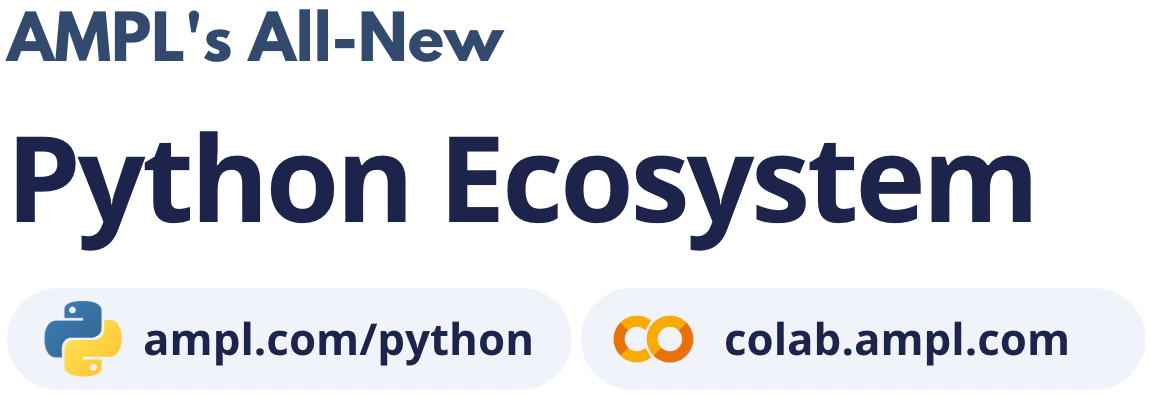AMPL Python API¶
amplpy is an interface that allows developers to access the features of AMPL from within Python.
For a quick introduction to AMPL see Quick Introduction to AMPL.
In the same way that AMPL’s syntax matches naturally the mathematical description of the model,
the input and output data matches naturally Python lists, sets, dictionaries, pandas and numpy objects.
All model generation and solver interaction is handled directly by AMPL, which leads to great stability and speed; the library just acts as an intermediary, and the added overhead (in terms of memory and CPU usage) depends mostly on how much data is sent and read back from AMPL, the size of the expanded model as such is irrelevant.
With amplpy you can model and solve large scale optimization problems in Python with the performance of heavily optimized C code
without losing model readability. The same model can be deployed on applications
built on different languages by just switching the API used.
More notebooks with examples available on the AMPL Model Colaboratory.
Contents¶
- Introduction
- Initial Setup
- Quick start
- Complete listing
- Needed modules and AMPL environment creation
- Load model and data from files
- Load model using eval
- Load the data using Pandas objects
- Load the data using lists and dictionaries
- Solve a problem
- Get an AMPL entity in the programming environment (get objective value)
- Modify model data (assign values to parameters)
- Get numeric values from variables
- Get arbitrary values via ampl expressions
- Class structure
- Python API Reference
- Python API Examples



